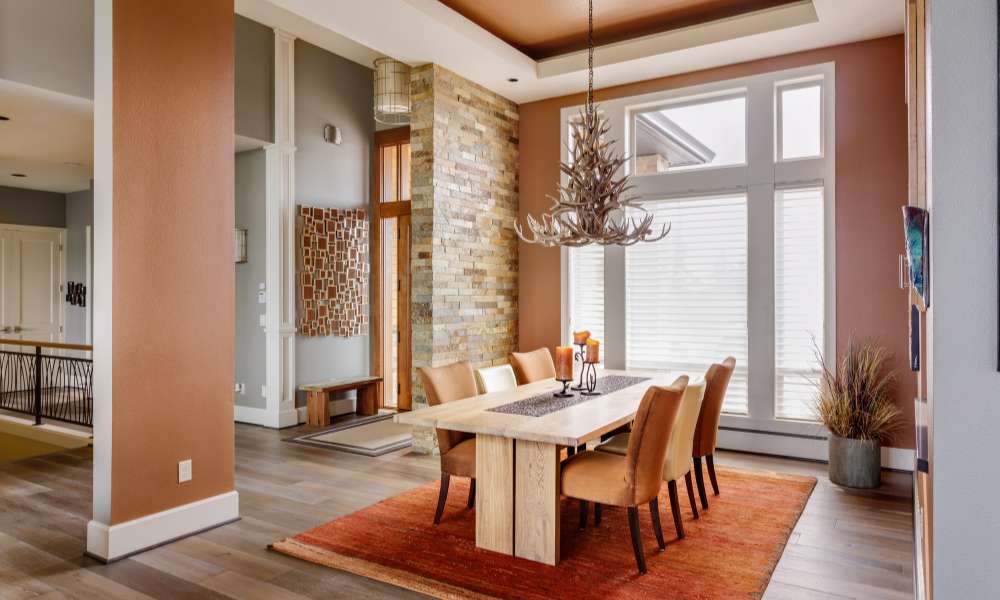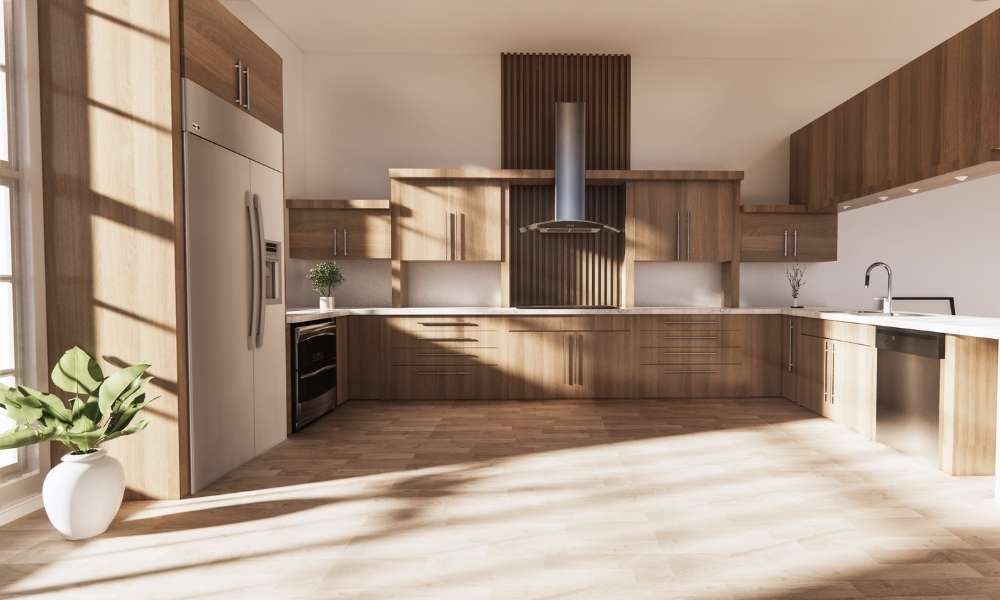A dining room table is more than just a piece of furniture; it’s the heart of your home where family and friends gather for meals, conversations, and celebrations. Creating your DIY dining room table offers numerous benefits, from cost savings to the satisfaction of crafting a unique piece that reflects your style. With a range of design options and materials, you can tailor the table to fit perfectly within your dining space, ensuring both functionality and aesthetic appeal. Whether you prefer a rustic farmhouse look, a sleek modern design, or something entirely custom, a DIY dining table project allows for endless creativity. This guide will walk you through the planning, building, and finishing processes, providing tips and inspiration to help you create a beautiful and durable dining room table that will become the centerpiece of your home.
1. Planning and Designing Your Table
The first step in creating your DIY dining room table is thorough planning and design. Begin by assessing the available space in your dining area to determine the appropriate table dimensions, ensuring there’s ample room for seating and movement. Next, choose a design style that complements your home décor, whether it’s modern, rustic, farmhouse, or eclectic. Consider the overall aesthetic you want to achieve and how the table will fit with existing furniture. Sketching and blueprinting your design are crucial steps that help visualize the final product and guide the building process. Create detailed drawings that include measurements and construction notes, which will serve as a roadmap during construction. Thoughtful planning and design ensure that your DIY dining table is not only functional and stylish but also tailored to your specific needs and preferences.
2. Selecting Materials
Selecting the right materials is essential for building a durable and attractive DIY dining room table. Common material options include various wood types, metal, and glass. Hardwoods like oak, maple, and walnut are popular for their strength and timeless appeal, though they can be more expensive. Softwoods like pine offer a more budget-friendly option but may require additional care to prevent dents and scratches. Metal components can add an industrial or modern touch, providing excellent support and durability, while glass tabletops give a sleek, contemporary look but require frequent cleaning and can be fragile. For a sustainable approach, consider using reclaimed wood or bamboo, which are eco-friendly and add unique character to your table. Weighing the pros and cons of each material helps ensure you choose the best option for your design, budget, and lifestyle.
3. Tools and Equipment Needed
Building a DIY dining room table requires a set of essential tools and equipment. Key tools include a saw for cutting wood to size, a drill for making holes and driving screws, and clamps to hold pieces securely while gluing or assembling. Sandpaper and an electric sander ensure smooth surfaces, while a tape measure and square are vital for accurate measurements and angles. Safety equipment is crucial; always wear safety glasses to protect your eyes, ear protection if using loud power tools, and a dust mask to avoid inhaling wood particles. Additionally, helpful gadgets like a pocket hole jig can make creating strong joints easier, and a level ensures your table sits evenly. Prioritizing the right tools and safety gear not only simplifies the building process but also ensures a safe and successful DIY project.
4. Building the Tabletop
Constructing the tabletop is a crucial step in creating your DIY dining room table. Start by selecting and cutting your wood pieces to the desired dimensions. Arrange the pieces side by side, ensuring the edges align seamlessly. To join the wood pieces, apply wood glue along the edges, then clamp them tightly to secure the bond. For added strength, use screws or dowels at regular intervals along the joints. Once the glue has dried and the pieces are firmly joined, remove the clamps. Next, sand the tabletop thoroughly, beginning with coarse-grit sandpaper and progressing to finer grits, to achieve a smooth and even surface. Finish by applying a stain or sealant to protect the wood and enhance its natural beauty. This step-by-step approach ensures a sturdy, aesthetically pleasing tabletop that forms the heart of your dining table.
5. Constructing the Table Base
Constructing a sturdy and stylish base is essential for your DIY dining room table. Begin by choosing a design for the legs and base that complements the tabletop. Options range from simple straight legs to more elaborate trestle or pedestal bases. Cut your chosen materials to size and assemble the legs first, ensuring all connections are secure and even. If using a trestle or pedestal design, build the central support structure before attaching the legs. Use wood screws and brackets to secure all joints, adding wood glue for extra strength. When the base is assembled, position it upside down on the underside of the tabletop and attach it securely using screws and metal brackets. Ensure the legs are evenly spaced and the table is level. This approach guarantees a stable and durable base that supports the tabletop effectively.
6. Customizing Your Table
Customizing your DIY dining room table allows you to add unique features that enhance both functionality and style. Consider incorporating extensions to accommodate larger gatherings, or adding drawers for convenient storage of dining essentials. Decorative elements like carved edges or inlays can add a distinctive touch. For a personalized finish, choose from various staining and painting techniques; a rich wood stain highlights the natural grain, while bold paint colors can make a striking statement. Additionally, you might upholster the edges of the table or the seating to match your dining room decor, adding a layer of comfort and elegance. Using high-quality fabrics and padding ensures durability and comfort. These customizations not only make your table uniquely yours but also elevate its practicality and aesthetic appeal, creating a centerpiece that reflects your style.
7. Assembly and Final Touches
Assembling your DIY dining room table involves carefully combining the tabletop and base to ensure stability and alignment. Start by positioning the tabletop upside down on a soft surface to prevent scratches. Place the assembled base on top of the tabletop, ensuring it is centered and properly aligned. Secure the base to the tabletop using wood screws, making sure all connections are tight and flush. Once assembled, flip the table upright and check for stability, making any necessary adjustments. Next, perform a final sanding to smooth out any rough edges or surfaces. Apply your chosen finish—whether it’s a wood stain, paint, or sealant—using even strokes and allowing adequate drying time between coats. This final touch not only protects the wood but also enhances the table’s appearance, ensuring your dining table is both beautiful and functional.
8. Maintaining and Caring for Your DIY Table
Maintaining and caring for your DIY dining room table ensures it remains in excellent condition for years. Regular maintenance includes wiping the table with a soft, damp cloth to remove dust and spills, followed by a dry cloth to prevent moisture damage. Use coasters and placemats to protect the surface from heat and scratches. For minor damages and scratches, gently sand the affected area and reapply the finish to blend it seamlessly with the rest of the table. Read, Diy Dining Room Table Ideas. Long-term care varies depending on the material: wood tables benefit from occasional polishing to preserve their luster, while metal bases may require anti-rust treatments. For glass elements, use a gentle glass cleaner to maintain clarity. Consistent care and prompt attention to any issues will keep your DIY dining table looking beautiful and functional over time.
9. Inspiration and Ideas
Exploring various DIY dining table designs can spark creativity and inspire your project. From sleek, modern tables with clean lines to rustic farmhouse designs featuring reclaimed wood, the possibilities are endless. Highlighting creative adaptations, such as incorporating built-in storage or using mixed materials like wood and metal, can add unique features that enhance both style and functionality. Additionally, examining reader-submitted projects and success stories offers real-world examples of innovative designs and practical solutions. These stories not only showcase diverse approaches and personal touches but also provide valuable insights and tips from fellow DIY enthusiasts. By drawing inspiration from a variety of sources, you can design a dining table that reflects your style and meets your specific needs, making your DIY project a rewarding and enjoyable experience.
10. Common Mistakes to Avoid
When embarking on a DIY dining table project, being aware of common mistakes can save you time and frustration. One major pitfall is inadequate planning, such as failing to measure your space accurately or choosing incompatible materials. To avoid this, take precise measurements and select materials that suit both your design and functionality needs. During the building process, rushing through steps like joining and clamping wood can lead to weak connections and misalignments. Ensure all joints are securely glued and clamped until fully set. Another common mistake is neglecting to sand and finish the wood properly, resulting in a rough and uneven surface. Take your time with sanding and apply finish evenly. If you encounter issues like wobbling legs or uneven surfaces, troubleshoot by checking alignment and securing joints. Following these tips will help you avoid common pitfalls and achieve a professional-quality result.
11. Cost and Budget Considerations
Estimating the cost of materials and tools is a crucial step in planning your DIY dining table project. Begin by listing all required materials, such as wood, screws, glue, and finishes, as well as necessary tools like saws, drills, and clamps. Research prices at local hardware stores and online to create a realistic budget. To save money, consider budget-friendly alternatives such as reclaimed wood or affordable plywood. Borrowing or renting tools can also reduce costs. Comparing the total expenses of a DIY project with the price of store-bought tables often reveals significant savings, especially for high-quality, custom designs. However, it’s important to factor in your time and effort. By carefully planning and utilizing money-saving tips, you can create a beautiful, cost-effective dining table that suits your style and budget.
12. Eco-Friendly DIY Table Projects
Embracing eco-friendly DIY table projects is a rewarding way to create sustainable and unique furniture. Using reclaimed and recycled materials, such as old barn wood or repurposed metal, not only reduces waste but also adds character and history to your dining table. Environmentally friendly building practices, like using non-toxic finishes and adhesives, further minimize your ecological footprint. These practices ensure that your table is safe for both your home and the environment. Sustainable DIY projects offer numerous benefits, including cost savings and the satisfaction of reducing environmental impact. Additionally, creating a table from reclaimed materials can inspire creativity, as each piece has its own story and uniqueness. By prioritizing sustainability, you contribute to a healthier planet while crafting a one-of-a-kind dining table that reflects your commitment to eco-friendly living.
13. Advanced Techniques and Add-ons
For experienced DIY enthusiasts, integrating advanced techniques and add-ons can elevate your dining table project. Incorporating technology, such as built-in chargers or smart features, can add modern convenience and functionality, making your table a central hub for family gatherings and workspaces. Advanced joinery techniques, like dovetail or mortise-and-tenon joints, enhance the table’s structural integrity and showcase your woodworking skills. For those seeking versatility, creating multifunctional tables with convertible or expandable designs can maximize space and adaptability. These tables can easily transform to accommodate more guests or different uses, such as turning a dining table into a workspace. By exploring these advanced techniques and features, you can create a truly unique and practical dining table that not only meets your needs but also highlights your craftsmanship and innovation.
14. Personal Stories and Testimonials
Hearing from DIY enthusiasts about their experiences can provide valuable insights and inspiration for your projects. Interviews with individuals who have successfully built their dining tables reveal the personal satisfaction and sense of accomplishment that come from creating something with your hands. Many share how their DIY projects have significantly improved their homes, adding unique, personalized touches that store-bought furniture can’t match. These stories often highlight overcoming challenges and learning new skills, offering practical advice and encouragement for beginners. Inspirational tales of first-time builders who transformed raw materials into beautiful dining tables can motivate others to start their DIY journey. By learning from others’ experiences, you gain confidence and insight, realizing that with patience and effort, you too can create functional, stylish, and meaningful additions to your home.
15. Photo Gallery of Completed Projects
A photo gallery showcasing completed DIY dining tables offers inspiration and practical ideas for your project. High-quality images of various tables highlight diverse styles, from rustic farmhouse designs to sleek modern pieces. Before and after photos provide a compelling look at the transformation process, illustrating how raw materials evolve into stunning furniture. Step-by-step visual guides accompany these images, breaking down each stage of construction and making complex techniques more accessible. These visual aids help demystify the building process, allowing you to follow along and replicate successful designs. By studying these completed projects, you can gather ideas, learn new methods, and gain the confidence to embark on your DIY dining table journey, knowing that beautiful, functional results are within reach.
16. DIY Dining Table Kits
DIY dining table kits provide a convenient and accessible way to build your own table without starting from scratch. These kits typically include pre-cut materials, detailed instructions, and all necessary hardware, making the assembly process straightforward and less time-consuming. Using a kit offers several benefits, such as ensuring precise cuts and measurements, which can be challenging for beginners. Additionally, kits often include high-quality materials selected for durability and aesthetic appeal. Popular brands like Ana White, Rockler, and Home Depot offer a range of styles, from rustic farmhouses to contemporary designs, catering to various tastes and skill levels. Reviews of these kits often highlight their ease of assembly, clear instructions, and satisfying results, making them an excellent option for those looking to create a custom dining table with confidence and ease.
17. DIY Dining Table for Different Spaces
Customizing a DIY dining table to fit different spaces ensures that it meets your specific needs and complements your home’s layout. For small spaces, consider compact designs like foldable tables or drop-leaf tables that can be expanded when needed but occupy minimal space when not in use. For large dining areas and open floor plans, opt for grand, extendable tables that can accommodate many guests, providing a focal point for gatherings. Incorporating benches instead of individual chairs can also save space and add a communal feel. For outdoor dining spaces, choose weather-resistant materials like treated wood or metal, and consider designs that incorporate features like built-in planters or storage for added functionality. Adaptable designs ensure your DIY dining table fits seamlessly into any space, enhancing both the aesthetics and usability of your home.
Conclusion
Creating a DIY dining room table is a fulfilling project that combines creativity, craftsmanship, and practicality. By carefully planning, selecting the right materials, and following detailed construction steps, you can build a unique and durable piece that perfectly suits your space and style. Whether you opt for a simple design or incorporate advanced features and customizations, the process allows you to tailor the table to your exact needs. Utilizing eco-friendly practices and exploring cost-effective options further enhances the value of your project. From small apartments to expansive dining areas, a DIY dining table can transform any space into a welcoming and functional environment. Embrace the satisfaction of building your own table and enjoy the personal touch it brings to your home.





